
Aeroclub/Airfix 1/72 E.E. P.1A
| KIT #: | |
| PRICE: | £3.75 for the conversion |
| DECALS: | One option |
| REVIEWER: | Carmel J. Attard |
| NOTES: | Vacuformed conversion |

| HISTORY |
After the issue of ER103 for a manned
Supersonic jet fighter in 1947, the English Electric company submitters a
proposal aircraft design two years later. It was then 1950 when on April 1st
English Electric received a Ministry of supply order for two prototypes that
became known as P.1 (P standing for Pursuit). The aircraft was designed to
explore low supersonic speed up to Mach 1.2.
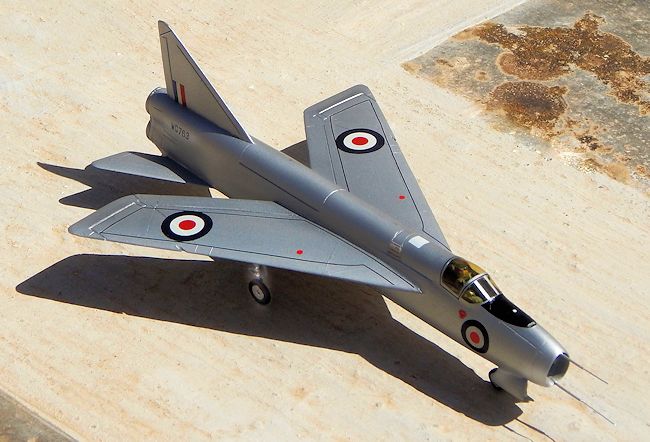 The project
design resulted in a highly sweptback wing configuration (60 degrees), with a
low set tail plane. The P.1A had been intended to have two Rolls Royce Avon
engines with reheat, but being unavailable due to delays resulting in two
Armstrong Siddeley Sa5 Sapphire engines. Initially without reheat, this being
fitted in lieu. Engines were mounted one above the other.
The project
design resulted in a highly sweptback wing configuration (60 degrees), with a
low set tail plane. The P.1A had been intended to have two Rolls Royce Avon
engines with reheat, but being unavailable due to delays resulting in two
Armstrong Siddeley Sa5 Sapphire engines. Initially without reheat, this being
fitted in lieu. Engines were mounted one above the other.
The aircraft was to be developed into
a fighter type and it was fortunate for English Electric as it met many of the
requirements. The P.1 flew for the first time on 2nd
December 1952 and remained in service at the Royal Aircraft Establishment
facilities in Bedford until allocated for preservation in 1968 and is currently
at the Cosford aircraft museum.
The P.1A WG763 was
the second of two prototypes built, the other being WG760 ordered under ER103.
The following is a brief history of P.1A WG763.
18.07.55 First flight at Warton. Loaned to firm for 1955 and 1956 SBAC Shows
05.10.56
Accepted off contract for general development work at
EECo
03.06.57
To Leuchars for display to HM The Queen
21.06.57
To RAE Bedford, suitability tests and tail loading
measurements.
 02.04.06
Ground resonance tests at Bedford.
02.04.06
Ground resonance tests at Bedford.
28.02.62
Parachute streaming tests by Vickers-Armstrong at Bedford
17.08.62
Ground Resonance tests at Bedford Allotted for Ground Instruction as
7816M
21.01.64
Despatched from Bedford to RAF Henlow. From 1982 on display at
| THE KIT |
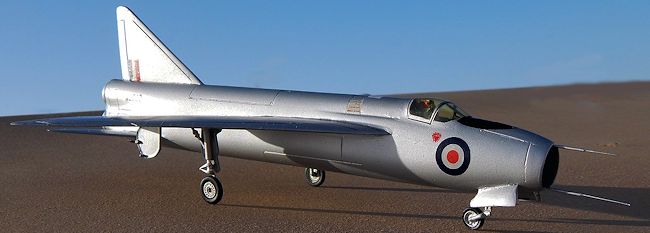 The English
Electric P.1A WG763 was a service test aircraft. To make this aircraft model the
conversion kit was designed for use with Airfix Lightning F1 or others as the
Matchbox F6/T55 or Frog/Hasegawa. The latter two kits will require the wing
leading edges to be straightened..
The English
Electric P.1A WG763 was a service test aircraft. To make this aircraft model the
conversion kit was designed for use with Airfix Lightning F1 or others as the
Matchbox F6/T55 or Frog/Hasegawa. The latter two kits will require the wing
leading edges to be straightened..
I went for parts
acquired from the Airfix kit of the F1. This had straight leading edges. The
Aeroclub kit provides a new vac form fuselage halves in white styrene. There are
air intake ducts, cockpit bulkhead and floor and undercarriage doors. There is a
clear vac-form canopy, and in metal are an ejection seat, full undercarriage
legs and wheels as well as rear outlet jet pipes.
| CONSTRUCTION |
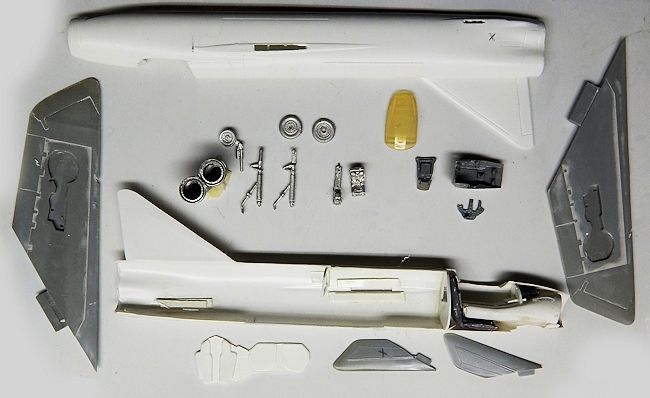
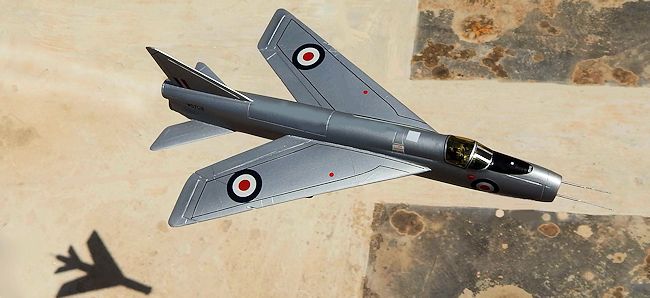
Extra
weight was added behind the crew seat. Nose wheel well sidewall was built up
from plastic card. Fuselage halves were then glued together. Donor wing parts
from Airfix F1 kit were glued to fuselage ensuring correct level as per front
elevation in scale plans. Metal undercarriage parts were glued in place using
cyano-glue.
| COLORS & MARKINGS |
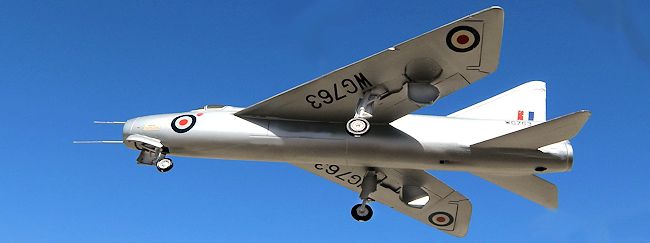 Cockpit
interior and seat were black, pilot figure painted in costume of that era and
the rest of the model was an overall silver and Modelmaster lacquer gloss mix
which was airbrushed with fine needle. No decals came with the kit but
registration and roundels all came from Modeldecal
sheets.
Cockpit
interior and seat were black, pilot figure painted in costume of that era and
the rest of the model was an overall silver and Modelmaster lacquer gloss mix
which was airbrushed with fine needle. No decals came with the kit but
registration and roundels all came from Modeldecal
sheets.
| CONCLUSIONS |
This conversion
is highly suitable as an introduction to vac form modelling particularly as it
is used with injected F1 kit parts or F3 kit. Having built earlier its
contender, the Fairey Delta 2, I have now both supersonic early jet aircraft of
the same era.
| REFERENCES |
Air Britain
Aeromilitaria V32 issue 127.
June 2015
If you would like your product reviewed fairly and fairly quickly, please contact the editor or see other details in the Note to Contributors.